Labradoodles Were Invented in the 80s By a Breeder Who Regrets It
The Labradoodle—a mix of Labrador Retriever and Poodle—is undeniably the world’s most popular mixed dog breeds. Since the first Labradoodles were created in the 1980s, the mix has inspired dozens of other Doodle dogs and Poodle mixes. The Labradoodle was developed with the intention of creating a low-shedding breed of service dogs, but Wally Conron—the original breeder—actually created what would become the largest dog craze of the 21st century.
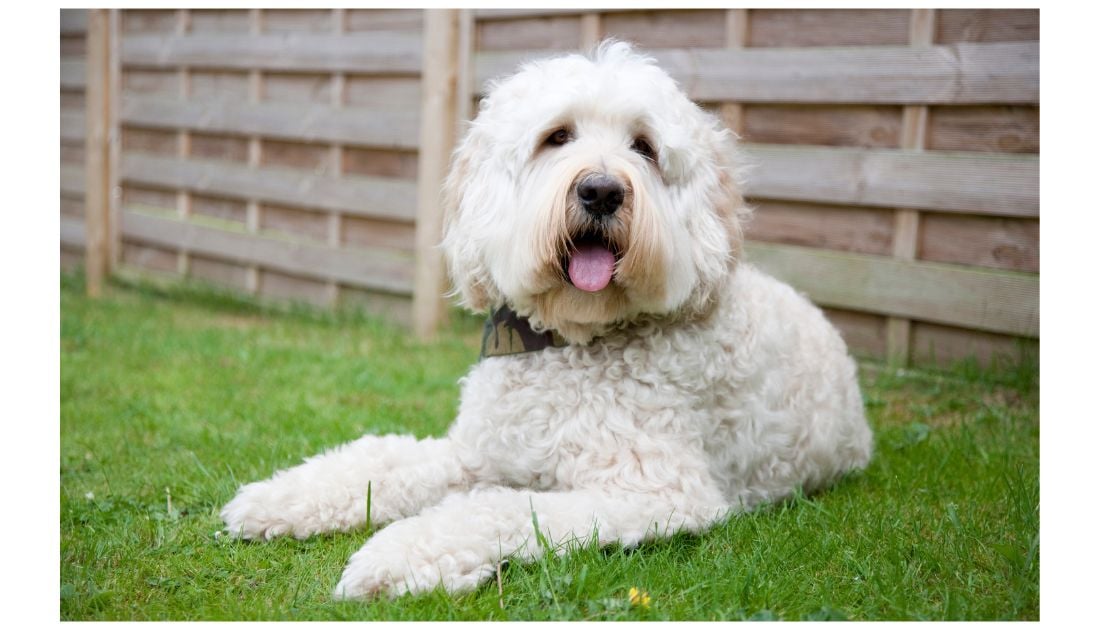
This guide covers everything you’ve ever wanted to know about Labradoodles including information on finding reputable breeders, a guide to deciphering Labradoodle generation classifications, and much more. Let’s learn all about Labradoodles!
Explore the Diversity of Labradoodles with 7 from Instagram
There isn’t a straightforward way to answer the question: “What does a Labradoodle look like?” Labradoodles are diverse and come in multiple sizes, colors, patterns, and coat texture variations. Although they can look very different from one another, there are a few common traits of a Labradoodle to help you identify this mixed-breed dog.
Look for dogs that are curly-coated, have intelligent and inquisitive faces, long slender tails, and wide smiles. Of course, not all Labradoodles will be curly. “We have a straight-haired Labradoodle F1,” says codex_simplex in their comment on a Reddit thread titled Sell me on a Labradoodle. “Basically the same personality as a Lab, [and] most people mistake her for a Lab.”
Let’s meet seven Labradoodles from Instagram that all look different!
1. Winston the Standard Black Labradoodle
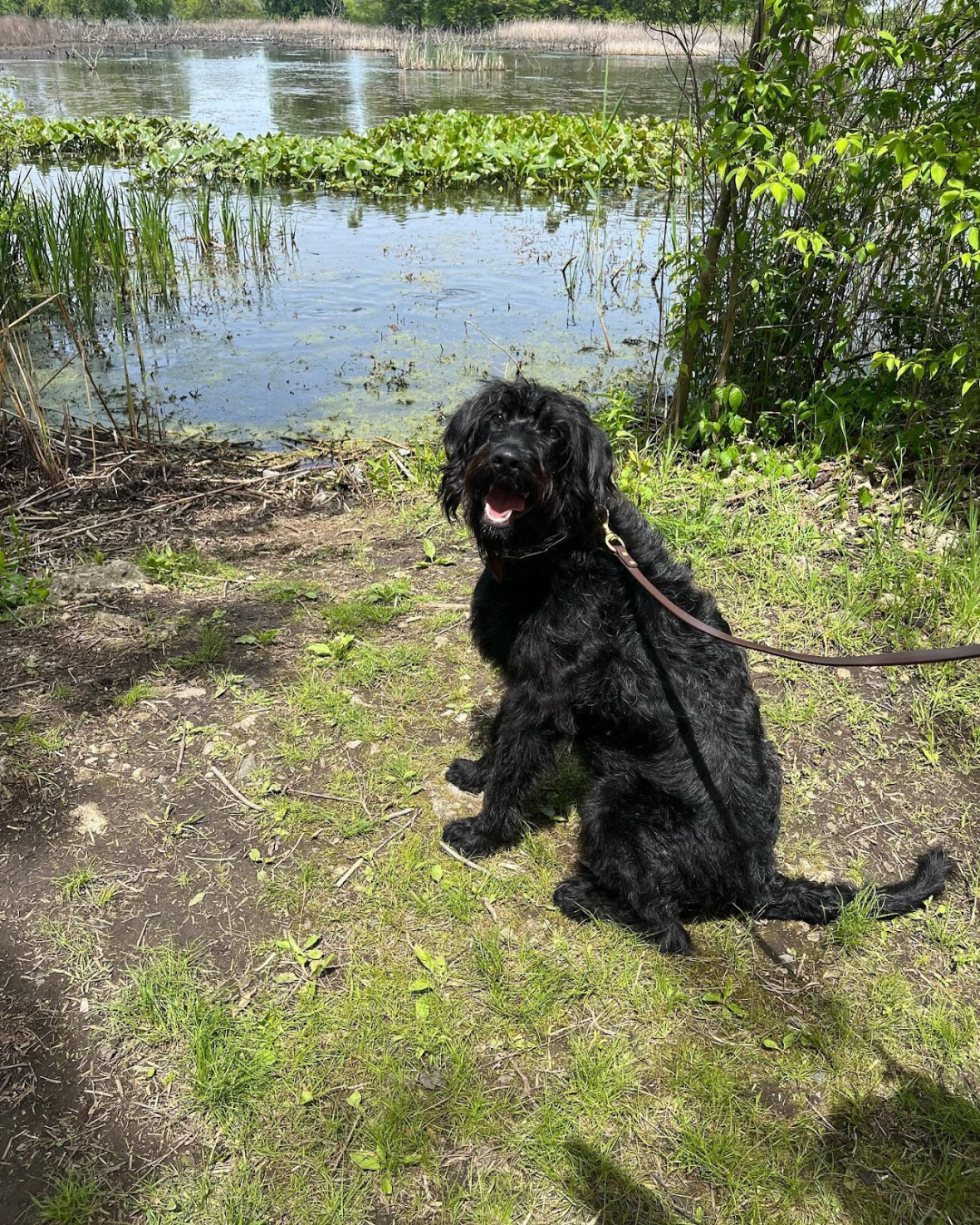
Source: @Winston.The.Black.Labradoodle
Winston lives in Philadelphia with his humans who rescued him when he was just a pup. Now living the good life, Winston is obsessed with water and loves to swim—a classic in the long list of interesting Labradoodle traits.
2. Juneau the Parchment Mini Labradoodle
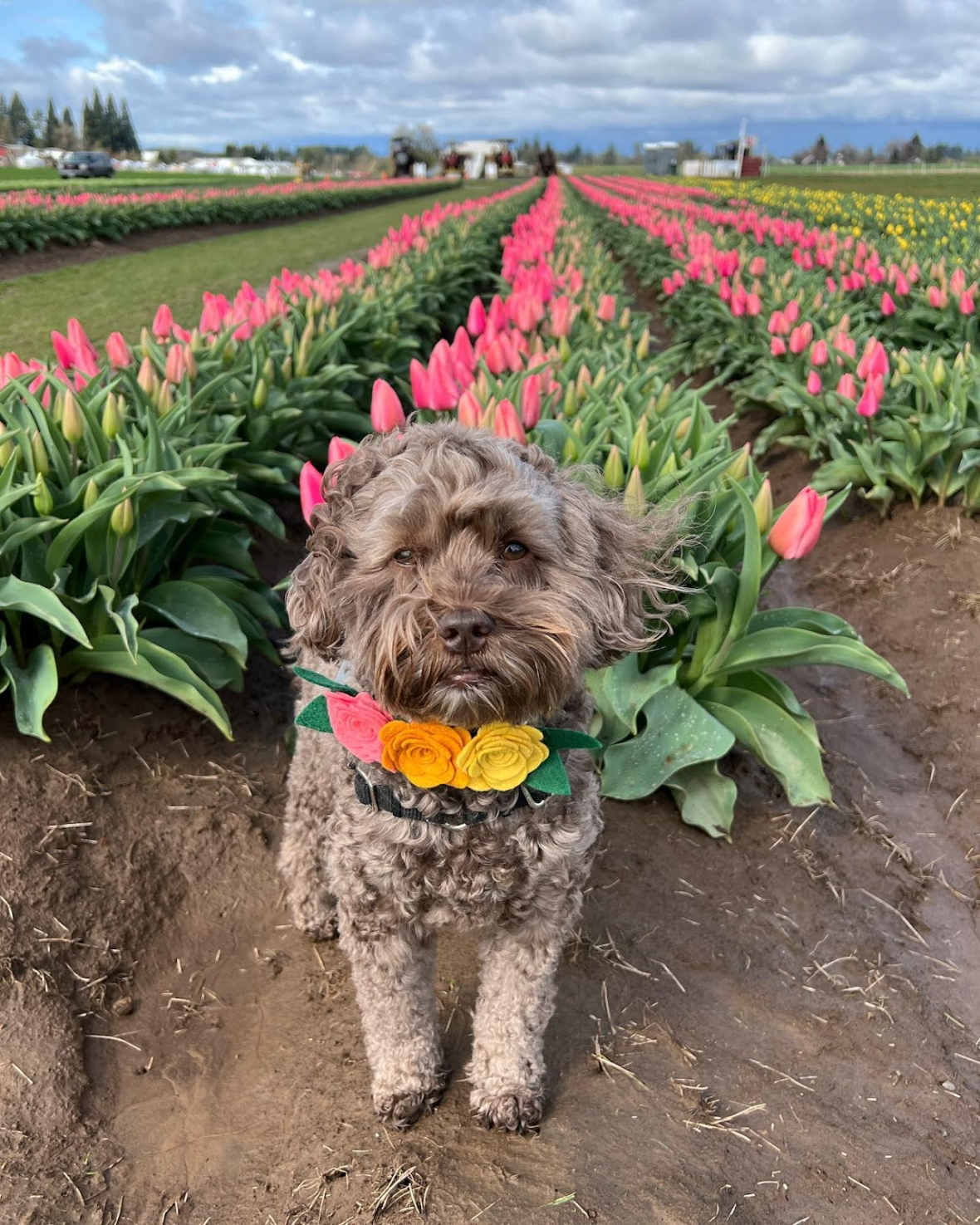
Source: @Living.The.Juneau.Life
This absolute darling is Juneau, a mini Labradoodle living in Ashland, Oregon. Juneau is a unique color sometimes called “parchment” which looks like a light, faded chocolate brown. Juneau is a super friendly pup (which is a common Labradoodle personality trait) and gets to go to work with her mom to be a greeter in her store!
3&4. Sulley & Dug
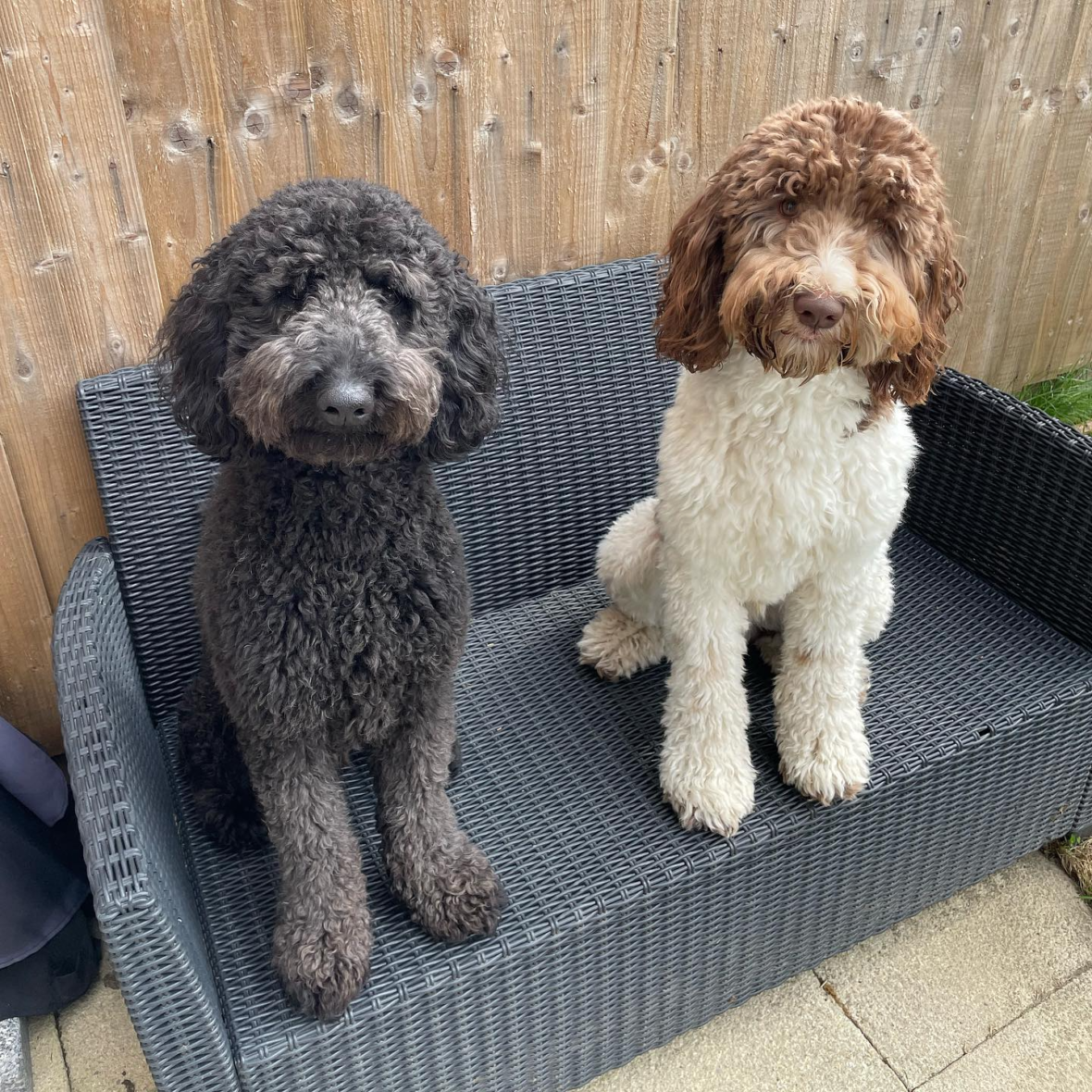
Source: @SullyAndDug
This twosome includes Sulley (left) and Dug (right), two Labradoodles from North Wales! Sulley is a black/gray Labradoodle, and Dug is a semi-unusual Parti Labradoodle. Despite their very different coloring, both of these pups have the classic curly Labradoodle coat.
5. Ozzy the Medium White Labradoodle
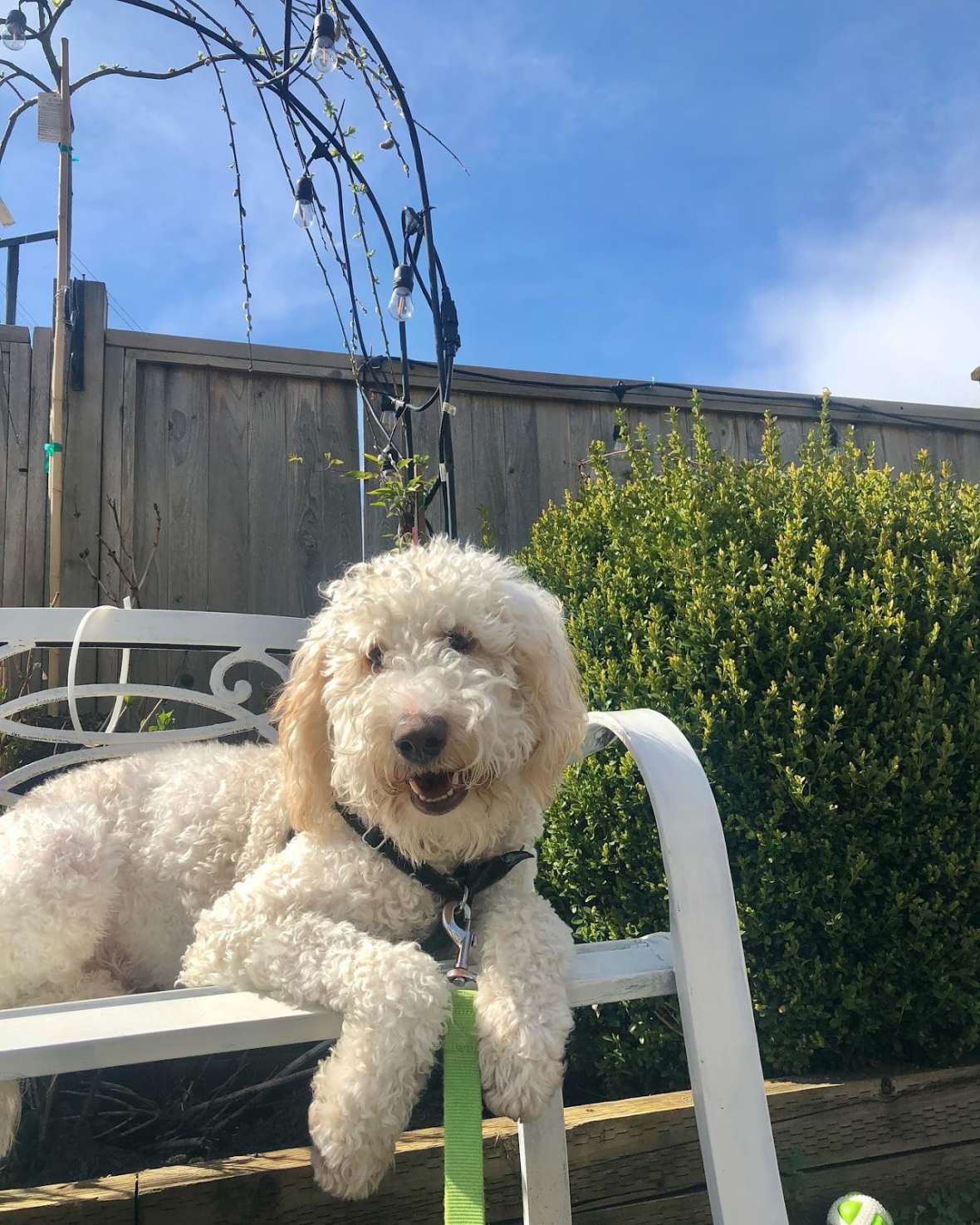
Source: @OzzyTheDoodleBug
Ozzy lives in Vancouver, British Columbia, and was bred by Fairfield Doodles, which we’ll discuss more later on. Ozzy is a medium Labradoodle and is part Moyen Poodle—a size between Standard and Miniature Poodles.
6. Barkley the Mini Labradoodle

Source: @BarkleyTheBeachDoodle
True to her Instagram handle, Barkley is a beach-loving mini Labradoodle living in Redondo Beach, California! All smiles, wags, and snuggles, Barkley has a classic go-with-the-flow Labradoodle demeanor.
7. Lucy the F1b Labradoodle
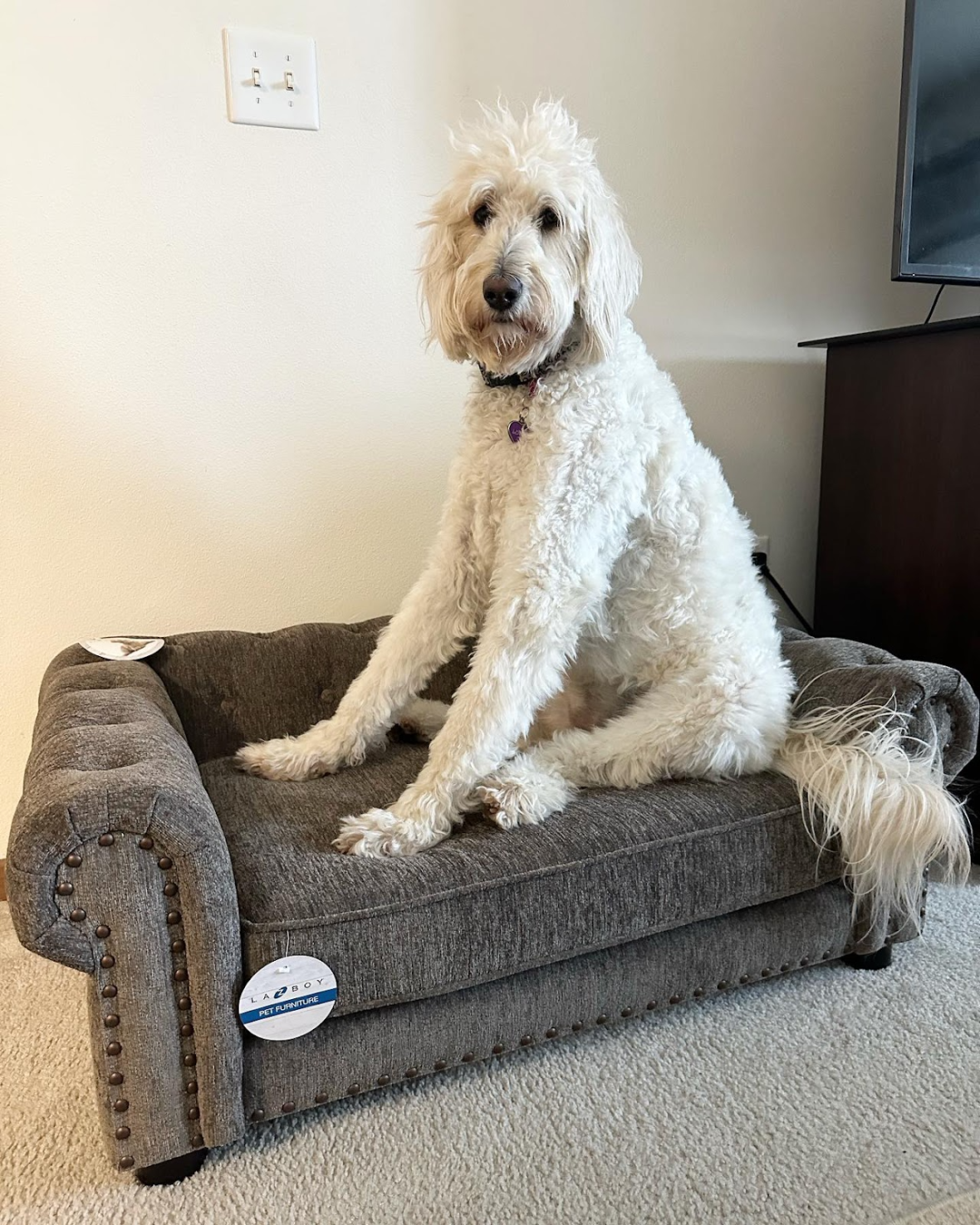
Source: @The.Lucy.Doodle
Lucy is an F1b Labradoodle, which means one of her parents was a Labradoodle and the other was a purebred Poodle. This means that Lucy is about 75% Poodle and 25% Labrador Retriever.
Labradoodle Breed Characteristics & Basic Info
Naturally, most Labradoodle characteristics mirror the behavior, health, and temperament of both the Labrador Retriever and the Poodle. Not an official breed, Labradoodles can vary enormously from individual to individual, but there has been some standardization after decades of development. Here, we’re doing our best to define Labradoodles and give potential owners a clear picture of what life with this mix looks like.
Labradoodle Personality
The goal when crossing two breeds is to combine like traits in order to produce a hybrid puppy with an even, predictable temperament. The Labradoodle was in part created thanks to the relative compatibility of Labrador Retrievers and Poodles. Both breeds are eager to please and highly trainable and were once used as retrievers to fetch ducks and other water birds for hunters. As a result, the Labradoodle is known for being attentive, social, and energetic.
While these traits are ideal, mixing breeds can also produce uncertain or unreliable results. Some Labradoodles suffer from separation anxiety and can be so high energy that they struggle to settle and rest. Of course, as with all breeds, Labradoodle behavior is part nature and part nurture.
Let’s hear what some Labradoodle owners have to say about Labradoodle personality traits.
“We have an F1 (50/50) labradoodle and while she is super sweet and willing to please, there’s days a bag of rocks is more intelligent,” says FredsMom2 in a Reddit comment.
“I have an F1 and an F3 [Labradoodle], both are great with people, other animals, and as someone who trained dogs these dogs are by far some of the easiest,” says a comment from SigfaNeith.
“Doodles are amazing dogs!! Sweet and loving and smart! They are a little hyper though, and definitely need exercise! Mine is 2 1/2 and has calmed down a tiny bit, but he still gets crazy sometimes,” says a comment on a thread requesting advice for someone who is about to get a Labradoodle.
“Our Labradoodle found us at 4 months of age, and we took him in/rescued him, and as loveable and great as he is, I have lost about 3 discontinued headphones, some of those video game controller covers, a sock or two, a shoe, and much more… they REALLY love to chew, and he’s 11 months old now, still chewing just as much as ever,” says DrKendo sharing advice in a similar thread.
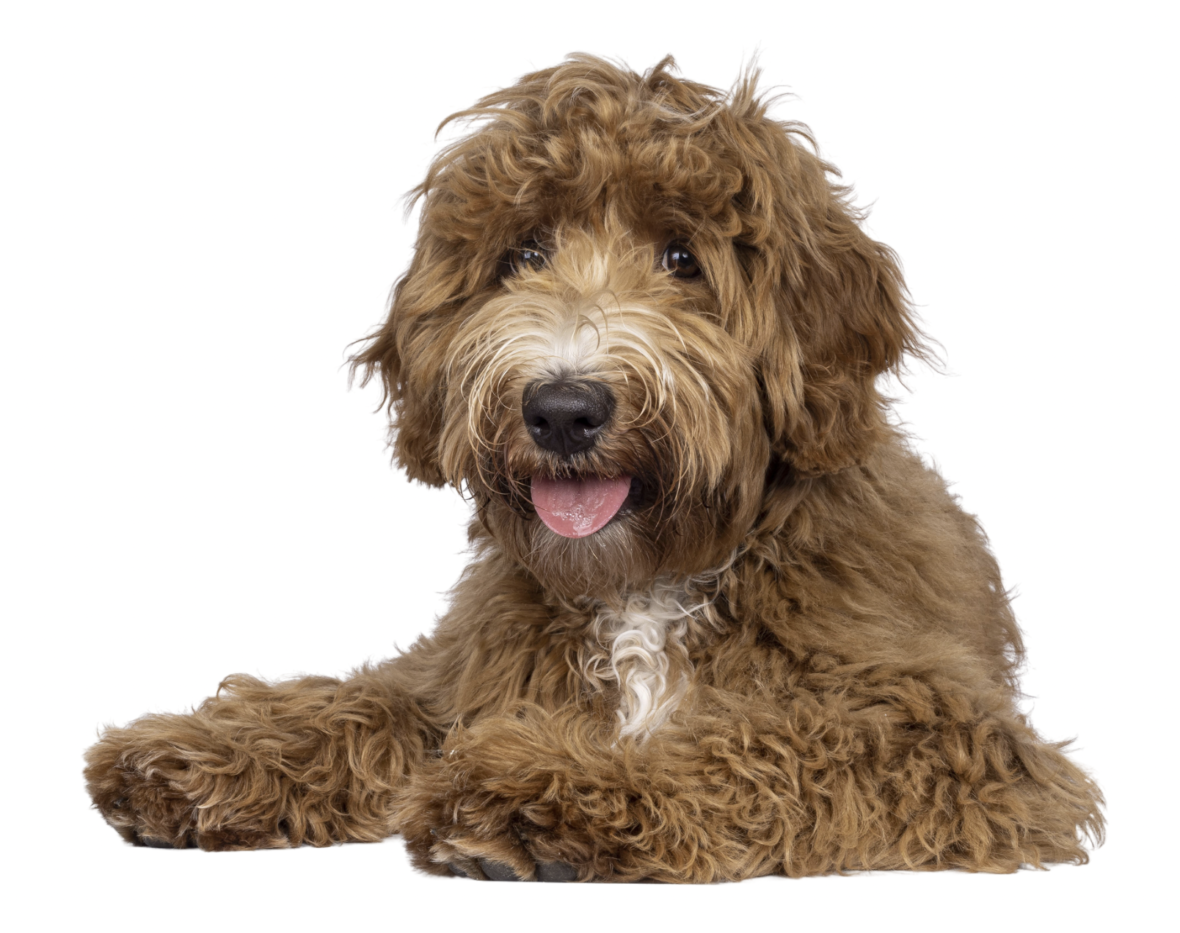
To sum things up, some common positive and less-positive Labradoodle characteristics include:
- Eager to please
- Social
- Goofy
- Attentive
- Energetic
- Playful
- Anxious
- Destructive
Labradoodle Sizes
Labradoodle adults vary widely in size, and come in three recognized sizes: Standard Labradoodles, Medium Labradoodles, and Mini Labradoodles.
Standard Labradoodles are a mix of Labrador Retriever (chocolate, black, or yellow) and Standard Poodle. These dogs usually stand at 21–24 inches at the shoulder and weigh between 45–90 pounds.
Medium Labradoodles can be bred in a few ways, but are often the result of breeding a Labrador with a medium (or Moyen) Poodle. Medium Labradoodles stand at 17–20 inches and weigh around 25–45 pounds.
Mini Labradoodles are the smallest Labradoodle variety and a mix of Labrador Retriever and Miniature Poodle. Mini Labradoodles are about 13–17 inches tall at the shoulder and weigh about 10–25 pounds.
| Standard Labradoodles | Medium Labradoodles | Mini Labradoodles | |
| Height | 21–24 inches | 17–20 inches | 13–17 inches |
| Weight | 45–90 pounds | 25–45 pounds | 10–25 pounds |
Labradoodle Health
If you find a reputable breeder who performs the necessary genetic health testing on their dogs, your Labradoodle can live a long, healthy life. Because they’re a mixed breed, Labradoodles are less likely to inherit breed-specific health problems than their purebred ancestors, but this isn’t necessarily a guarantee. Some of the health conditions you should look out for if you own a Labradoodle include:
- Joint issues (e.g. hip & elbow dysplasia, Legg-Calve-Perthes disease, patellar luxation)
- Eye and vision problems (e.g. progressive retinal atrophy)
- Allergies (food, environmental, and skin allergies)
- Ear infections
- Von Willebrand’s disease (a clotting disorder)
- Addison’s disease (a hormone imbalance)
- Epilepsy
Where To Buy Labradoodle Puppies
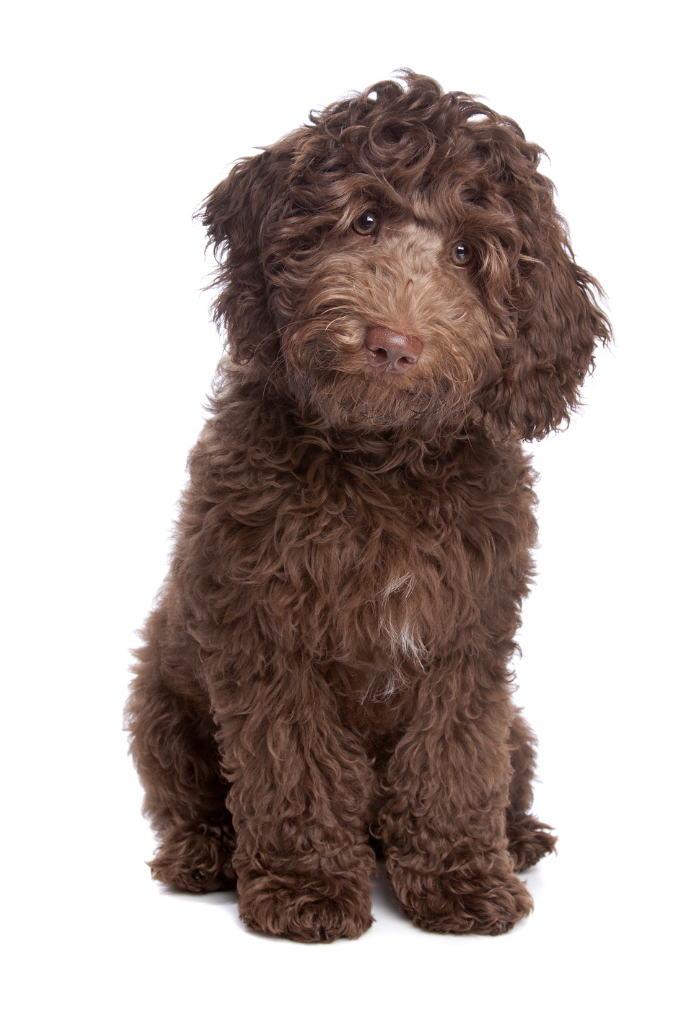
Although the Labradoodle has gained immense popularity, the mix isn’t universally loved. In fact, the original creator of the Labradoodle has been quoted saying that breeding this mix is his “life’s regret.”
“I opened a Pandora’s box [and] “I released a Frankenstein” Wally Conron said in an interview.
“People are just breeding for the money…unscrupulous breeders are crossing Poodles with inappropriate dogs simply so they can say they were the first to do it.”
Backyard breeders, puppy mills, and unethical breeders have jumped on the Doodle bandwagon to make a few bucks, charging unsuspecting dog owners high prices for puppies whose genetics have never been tested and whose parents are often poorly cared for. Of course, this is not the case for every Labradoodle breeder.
Thanks to the popularity of the Labradoodle, it is now easier than ever before to find reputable, ethical breeders of this mix. When selecting a breeder, look for one who meets these qualifications:
- Shows evidence of genetic testing
- Offers to let you meet the parent dogs and/or visit their site
- Shows evidence of veterinary treatment, vaccinations, and standard health testing
- Doesn’t use terms like “hypoallergenic” or “purebred Labradoodle”
Take a look at how a reputable breeder like Fairfield Doodles talks about their dogs: “Our adorable puppies come with a 2-year genetic health guarantee, so you can have none of the worries, but all of the love!”
Not only does Fairfield let you know they care about the well-being of their puppies, but they also focus on the happiness of their breeder dogs. “We believe every dog should be raised in a loving home…To continue our breeding program we rely on trustworthy, caring families who are selected to participate in our Co-Ownership Program. This ensures that all our future breeding dogs will be raised as a family member in a loving home environment.” Remember, the parent dogs matter too, and well-cared-for dogs produce happy, healthy puppies.
For help finding a reputable Labradoodle breeder, try using a breeder database like Good Dog. Alternatively, you can always choose to adopt or rescue a Labradoodle. Because they are one of the most common mixed breeds, Labradoodles often end up in shelters and rescues in need of new homes. Try visiting your local humane society, or check out a rescue resource like Petfinder.
Labradoodle Generations Explained—F1, F1b, F2, and Beyond
Most often categorized by size, Labradoodles can also be grouped by generation. Labradoodles aren’t always a perfect 50:50 Lab X Poodle mix. Only the first generation a breeder creates will be a 50:50 mix.
The system used by Labradoodle breeders to describe which generation their puppies belong to is the Filial Generation Classification System. A “filial generation” is any generation of mixed breeds produced as the result of breeding two purebred dogs—Labrador Retriever and Poodle, in this instance.
| Generation | Parent Pairing | Approximate Breed % | ||
| F1 Labradoodle | Labrador Retriever | Poodle | 50% Lab | 50% Poodle |
| F1b Labradoodle | F1 Labradoodle | Poodle | 25% Lab | 75% Poodle |
| F1bb Labradoodle | F1b Labradoodle | Poodle | 13% Lab | 87% Poodle |
| F2 Labradoodle | F1 Labradoodle | F1 Labradoodle | 50% Lab | 50% Poodle |
| F2b Labradoodle | F2 Labradoodle | Poodle | 37% Lab | 63% Poodle |
| F2bb Labradoodle | F2b Labradoodle | Poodle | 19% Lab | 81% Poodle |
| F3 Labradoodle | F2 Labradoodle | F2 Labradoodle | 50% Lab | 50% Poodle |
| Multigenerational | Varies | Varies | Varies | Varies |
As for which generation is best for people who want to become first time Labradoodle owners, there isn’t much consensus. Because Labradoodles are not purebred dogs, there is also no breeding standard to adhere to. Predicting a Labradoodle’s temperament, energy level, or even its adult size can be difficult, especially if the breeder you choose is inexperienced. If you can find a reputable breeder, they’ll be able to give you advice on which generation will be best for you.
Fun Facts About Labradoodles
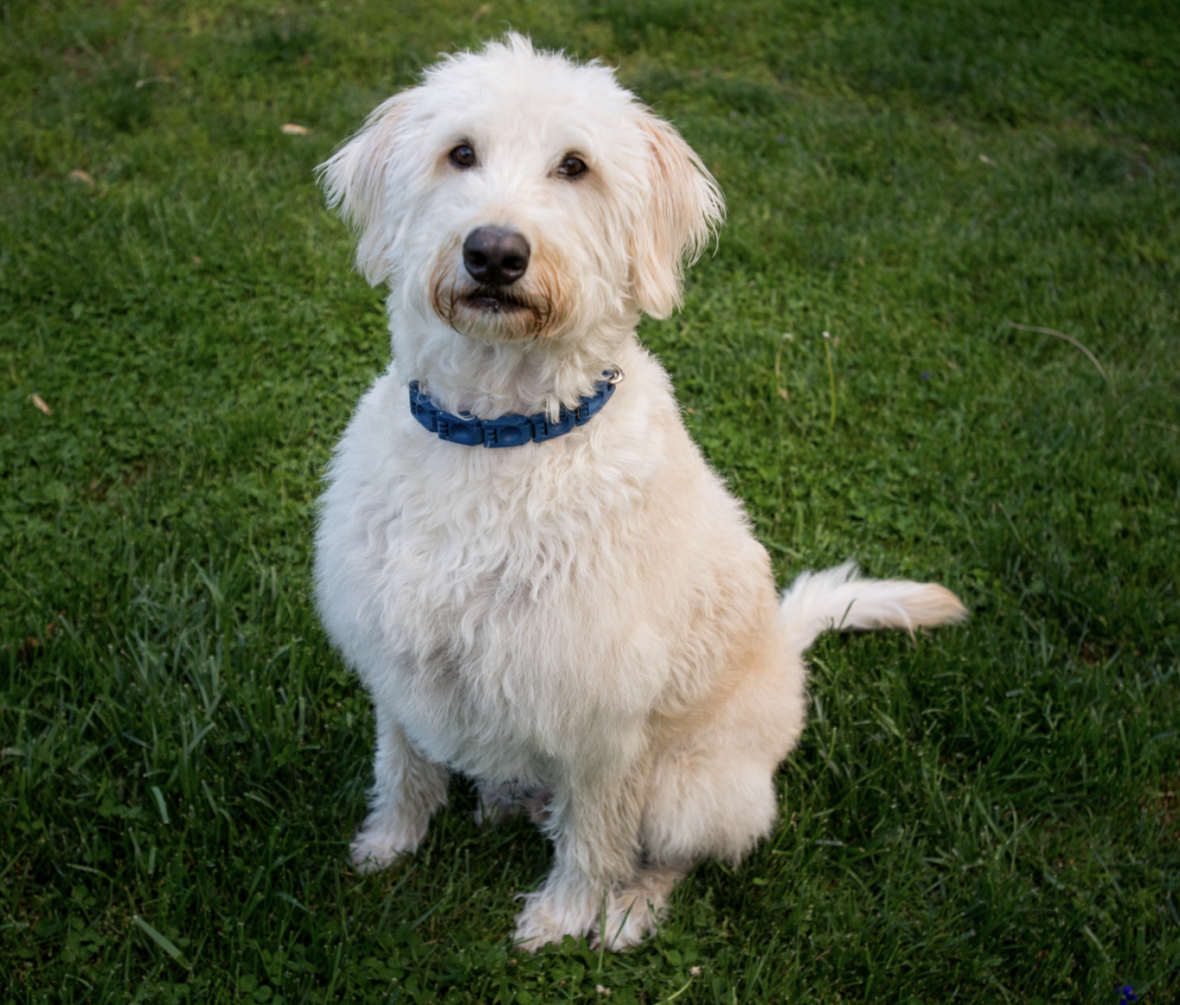
Are you ready for some exciting Labradoodle facts? Let’s give the technical stuff a rest and learn a few interesting tidbits.
1. The term “Labradoodle” has existed since the 1950s, but the first Labradoodle dog breeds weren’t produced formally until the 80s.
2. The Labradoodle is sometimes called an “Australian Labradoodle” because it was originally bred in Australia. This is not to be confused with the Aussiedoodle (a mix of Australian Shepherd and Poodle) or the Aussie Labradoodle (a Labradoodle mixed with an Australian Shepherd.)
3. Labradoodles are often amazing swimmers thanks to both their Labrador and Poodle heritage!
4. Despite being advertised as “hypoallergenic,” Labradoodles carry approximately the same amount of allergen as non-hypoallergenic dog breeds. Similarly, studies have shown that there is no significant difference in canine allergen concentration when comparing homes with hypoallergenic dogs to those with non-hypoallergenic breeds.
5. Labradoodles might be low-shedding, but their coats still need a lot of maintenance! Expect to spend $50—$150 every 6 weeks to have your Labradoodle professionally groomed.
Labradoodle FAQ
When you’re online researching Labradoodles, facts can be a little difficult to pin down. To help you get some clear answers, we’ve gathered some of the most common questions about the Lab x Poodle mix and are sharing our insight.
Are Labradoodles purebred dogs?
No! Labradoodles are a mixed breed dog created by combining Labrador Retriever (chocolate, yellow, or black) with Poodle (standard or miniature.) In many cases, Labradoodles will also have additional breed heritage. For example, it’s not uncommon to come across Labradoodle Hound mixes, Labradoodle Pitbull mixes, etc.
What do Labradoodles look like?
Labradoodles usually have a good mix of features from both their Lab and their Poodle sides. Often, Labradoodles will inherit features like body type and weight, color, and ear shape from their Labrador side. On the other hand, Labradoodles are more likely to inherit traits like fur texture, shedding, and face shape from their Poodle side.
How much do Labradoodles cost?
On average, a Lab Poodle puppy costs about $1,500–$2,500. Some breeders may charge as much as $4,000, but this is the high end. If you get your Labradoodle from a shelter, humane society, or rescue group, you’ll pay between $150–$500.
Are Labradoodles easy to train?
Sometimes. Some Labradoodles are very easy to train, highly intelligent, and ready to do anything for their humans. Others are more easily distracted, stubborn, or hyperactive. In general, Labradoodles do best with positive reinforcement training since they are especially motivated by praise, food, and time with their humans.
What is the Labradoodle energy level like?
Moderate. The vast majority of Labradoodles enjoy moderate amounts of activity during the day and need about 1–2 hours of fully engaged exercise, play, and general stimulation. Some Labradoodles are higher energy and are difficult to tire out. On the other hand, there are also Labradoodles that are total couch potatoes and need to be convinced to go out for a walk.
If you are planning to get a Labradoodle, it’s best to expect an energetic dog and to be prepared for lots of walks, playing, and training.
Are Labradoodles hypoallergenic?
No. Labradoodles are sometimes low-shedding, but not always, and being low-shedding doesn’t necessarily impact a dog’s potential to trigger allergies. Some people with allergies find that Labradoodles are less likely to cause allergic reactions, but others experience no difference between Labradoodles and any other breed.
Canine allergens are carried in proteins found in dog skin, saliva, and urine. No matter what kind of fur your dog has, these other factors are unavoidable.
Is a Labradoodle a good dog for a family with kids?
Sometimes. It’s important to understand that all dogs require supervision around children, even if they are gentle and comfortable around kids. Some Labradoodles really enjoy living with children and like the play time and energy of kids. Other Labradoodles may become overstimulated or anxious in loud environments or feel crowded and unsafe around small children who are not yet good at controlling their impulses.
Related Articles:
- Are Labradoodles Hypoallergenic? How to Manage Allergies Around Your Doodle
- Are Black Labradoodles & Black Goldendoodles Rare?
- The Amazing Australian Labradoodle
